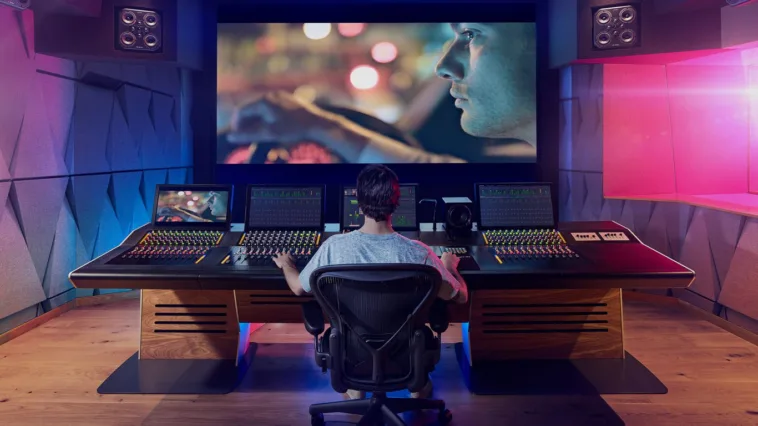As video editors, we know that storytelling relies heavily on seamless video cuts between shots.
However, choosing how to use these cuts for your footage can feel overwhelming since every scene, story, and mood calls for a different approach.
That is why we want to share five key video cut tips from our editing rulebook.
These are the same tips we use to bring our project visions to life, and we are confident they will up your editing game, too.
Tip #1. How to Use Your Jump Cuts
Jump cuts are a powerful editing technique to show time passing without relying on dialogue or extra shots.
Try to use them when your goal is to speed up time, skip over less important moments, or highlight action without dialogue or additional explanations.
These cuts are also ideal for shots that need high energy and fast-paced sequences, as they create a sense of urgency and maintain the viewer’s attention.
For example, you can use them for tutorials and vlogs, where keeping the audience engaged is crucial.
Tip #2. When to Use Your Match Cuts
A match cut is a transition technique that links two scenes by finding common ground. This method can be tricky, but it is one of the most powerful ways to transition between two seemingly unrelated scenes. It is also a clever way to make difficult scene transitions feel smoother and more connected.
For example, when you want to jump between two scenes that do not seem to have much in common, you can use a match cut to create a link between them. This link helps the viewer feel there is a reason for the transition, even if the scenes have different contexts.
You can use match cuts to highlight contrast, build tension, or introduce humor in shots in promotional videos, testimonial videos, product videos, social media videos, or music videos.
However, note that this technique only works if there is a meaningful connection between the scenes. If you try to force a match cut just for the sake of it, it can come off as cheesy or confusing. So, always check if the scenes you are connecting have a reason to be linked. If they don’t, it is better to skip the match cut.
Tip #3. Do Not Cut Too Much (Let the Scene Play Out)
In videos, sometimes it is best to let the action or scene unfold without cutting too much. Since cutting too often or too quickly can disrupt the flow of a scene.
So, please focus on the strategic use of video cuts and try not to overdo them. Remember to strike the right balance.
For example, directors like Stanley Kubrick, Francis Ford Coppola, and Martin Scorsese use long shots to build emotion and tension. These scenes might last a minute or longer, allowing the audience to fully experience the moment, almost like watching a live theater performance (something that a series of quick cuts cannot always achieve).
In essence, this tip is about knowing when to cut and when to let the scene breathe without any interruptions. So, remember to use cuts as tools to tell your story rather than rely on them excessively. Don’t feel compelled to cut every time you can.
Tip #4. Sync Sound With Action Cuts
When you do use action cuts, make sure the sound is in sync with the visuals.
For example, if you cut from one shot of a bowling ball rolling toward the pins to another shot of it knocking them over, the sound needs to match perfectly. You want the exact moment the ball hits the pins to align with that sharp, satisfying sound of impact.
Without that sync, the action can feel off or less impactful.
So, when editing your action cuts, check if you have all the sound effects you need to match each cut and that they are timed perfectly to enhance the action and keep it believable.
Tip #5. Your Story Should Come First
Finally, always remember that storytelling should come first.
The main goal of video editing is to tell a story. Your audiences aren’t watching a movie or video to admire the editing; they are there to experience the story.
So, every edit you make should have a clear purpose in pushing the story forward.
If you are tempted to include a flashy cut or a complex edit to show your creativity, always check if it helps the story. If the answer is no, it’s best to leave it out. Of course, sometimes the story might call for something more impressive, and that’s when you can let your editing shine. But if it doesn’t, keep it simple and focused on the narrative.
There’s plenty of time in your future projects to experiment with bold editing techniques. But for now, your edits should always serve the story, not compete with it.
When in Doubt, Seek Professional Help
If you find it difficult to master video cuts and edits, you are not alone. Editing is a skill that takes time and practice to perfect, and sometimes, despite our best efforts, certain cuts don’t land the way we want them to. That’s when it’s a good idea to seek professional help from a studio or experienced video editors like our team at Motion Edits.
Our team knows how to make cuts that serve the story, match sound with action, and use every shot to its fullest potential.
So, if you want to elevate your videos or need an extra set of professional hands, we’re here to help. You can contact us to learn more about our services and how we can assist you.
